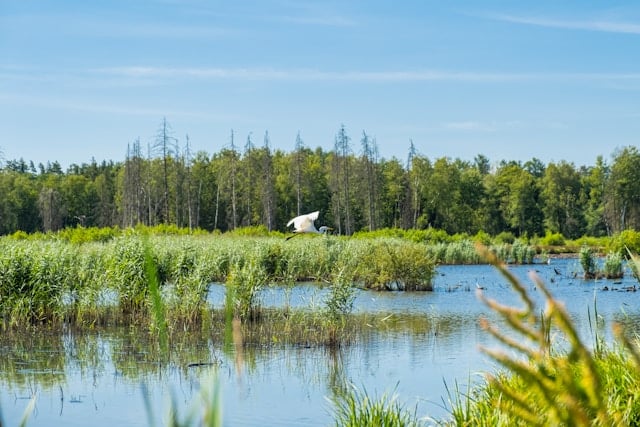How to Encourage Biodiversity in Urban Residential Developments in the UK?

Amidst the hustle and bustle of urban life, biodiversity often seems like the odd one out. Towering buildings, bustling streets, sprawling concrete landscapes – these are the images that dominate when we think about cities. But the truth is, urban areas can and should be havens for biodiversity, offering a rich blend of habitats for a variety of wildlife species. More than just beautifying our cities, biodiversity has a crucial role to play in mitigating climate change and creating healthier, more livable communities. Encouraging biodiversity in urban residential developments isn’t just a worthy goal, it’s an essential part of sustainable urban planning and development.
The Importance of Biodiversity in Urban Areas
Biodiversity is not merely about the existence of various species of flora and fauna, but it’s about the interconnection and interdependence of these species within their habitat. Urban areas, teeming with human activity, are often perceived as threats to biodiversity. However, they can also be poised as opportunities to foster unique ecosystems, contributing to urban sustainability and resilience.
Dans le meme genre : How to Plan and Prepare for a Career Shift in the UK’s Evolving Job Market?
In cities, residential developments provide the perfect stage for biodiversity to flourish. Green spaces, rooftop gardens, and other natural areas within these projects can become sanctuaries for urban wildlife. Furthermore, embedding biodiversity in urban planning and housing development will contribute to the health of the city’s environment, making it more resilient to the impacts of climate change.
Net Gain: A Tool for Biodiversity Enhancement
Net gain is a principle applied in environmental conservation, where the aim is to leave the natural environment in a measurably better state than it was pre-development. In the UK, new developments are required by law to deliver a 10% net gain for biodiversity. This places a legal obligation on developers to not just avoid harm to nature, but actively improve it.
Lire également : What Are the Most Effective Ways for UK Families to Reduce Their Carbon Footprint?
This approach is gaining momentum around the world as a mechanism to reconcile the need for housing and infrastructure with the necessity for environmental conservation. By incorporating net gain principles in urban developments, we can ensure that our cities are not just built, but are grown – fostering a mutually beneficial relationship between the built and natural environment.
Strategies for Encourishing Biodiversity in Urban Residential Developments
There are several strategies and design principles that can be utilized to encourage biodiversity in urban residential developments. One of them is the use of native plants in landscaping. Native plants are adapted to the local climate and soil conditions, requiring less water and care than exotic species. They also provide the right kind of food and habitat for local wildlife, supporting a healthier ecosystem.
Another strategy is the creation of green corridors – continuous strips of natural habitat that connect green spaces in and around residential areas. These corridors allow wildlife to move freely between different areas, helping to maintain healthy, diverse populations.
Moreover, the implementation of green roofs and walls can also provide habitats for a variety of species. These green structures offer numerous benefits, including reducing urban heat island effect, improving air quality, and even providing recreational spaces for residents.
Policies That Support Biodiversity in Urban Developments
To encourage biodiversity in urban residential developments, supportive policies play a crucial role. In the UK, policy initiatives such as the National Planning Policy Framework and the Environment Bill emphasize the importance of integrating biodiversity considerations into the planning and design of new developments. These policies provide a regulatory framework that mandates biodiversity net gain, and provide guidelines on how to achieve it.
Furthermore, cities across the UK are adopting local biodiversity action plans, setting specific targets for biodiversity conservation and enhancement within their jurisdiction. These local strategies are essential in guiding developers and providing a clear direction on how to achieve biodiversity objectives in urban residential developments.
Collaborative Efforts for Biodiversity Conservation
Promoting biodiversity in urban residential developments requires a collaborative effort from various stakeholders. Developers, architects, ecologists, urban planners, and local communities must all work together towards this common goal.
Public awareness and community involvement are key to the success of these initiatives. By involving local communities in the planning and implementation process, we can ensure that the projects are designed not only for wildlife but also for the people who will live and work in these areas. After all, fostering biodiversity in urban residential developments is not just about protecting nature, it’s about creating thriving, sustainable communities where people and nature coexist harmoniously.
The Role of Housing Groups and Developers in Upholding Net Gain Biodiversity
Housing groups and developers play a critical role in advancing biodiversity in our urban environments. As key decision-makers in urban development projects, they have the power to integrate nature-based solutions into their designs, fostering biodiversity and a more sustainable built environment. The principle of net gain biodiversity has now become a benchmark in shaping housing development policies in the UK, with a focus on not just constructing buildings, but also creating natural habitats within them.
Embracing a biodiversity net gain approach means housing developers commit to leaving the environment in a better state than it was before their projects. This goes beyond mitigating harm to the environment; it involves adding value to it. This could be achieved through various means such as habitat creation, enhancing green spaces, or even incorporating green roofs and walls into building designs.
However, achieving this is no small task. It requires intricate planning and a comprehensive understanding of the local biodiversity. Such an endeavour necessitates close collaboration between housing developers, architects, ecologists, and the local community. All these stakeholders bring unique perspectives and expertise, crucial for shaping a residential development that balances the needs of its human inhabitants and the local wildlife.
In the UK, some housing groups such as Southern Housing have taken commendable strides towards enhancing biodiversity in their development projects. They have embraced the net gain principle, investing in creating and enhancing habitats, increasing tree cover, and supporting greener neighbourhoods. Such initiatives not only contribute to biodiversity conservation but also establish healthier, livelier urban communities.
Conclusion: The Future is Green
As we continue grappling with the alarming impacts of climate change, biodiversity conservation in urban areas is no longer an option, but a necessity. Urban residential developments offer vast opportunities for introducing and nurturing biodiversity, transforming our cities into healthy ecosystems where humans and wildlife thrive side by side.
The concept of net gain biodiversity has redefined the way we approach urban planning and development. It has changed the narrative from avoiding damage to the environment to improving it, encouraging the creation of vibrant, green spaces within our residential developments.
Moreover, the establishment of policy frameworks such as the National Planning Policy Framework and the Environment Bill provides a roadmap for developers. These policy guidelines, alongside the adoption of local biodiversity action plans, empower cities to set and achieve their biodiversity targets.
Ultimately, fostering biodiversity in urban areas transcends creating habitats for wildlife. It’s about building resilient communities that can adapt to and mitigate the effects of climate change. It’s about improving air quality and reducing the urban heat island effect. It’s about enhancing the beauty of our cities and the quality of life of their inhabitants.
Biodiversity conservation is indeed a collective effort. Engaging all stakeholders, including housing developers, architects, ecologists, and the local community, is vital in making our cities greener and more sustainable. The future of urban development is green, and together, we can create a future where we live harmoniously with nature.
